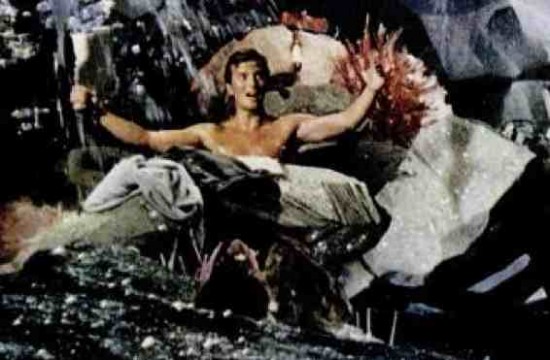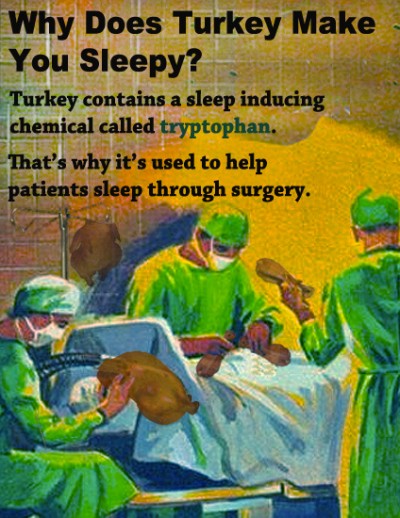Science
Rubber Chicken At The Edge of Space
Sent there recently by California high school students to measure the radiation from a solar storm. Details here. I wish my high school science projects had been that cool. Instead, they were all intensely boring. The only one I even remember was a water electrolysis experiment that I had to work on for weeks, and which involved the edge-of-your-seat thrill of watching a battery split water into hydrogen and oxygen.
Posted By: Alex - Fri Apr 20, 2012 -
Comments (6)
Category: Science, Experiments
Interior Clouds
Dutch artist Berndnaut Smilde creates temporary clouds inside rooms by regulating the temperature and humidity inside the rooms.
When I saw this it immediately reminded me of an experiment conducted in the eighteenth century by the Dutch scientist Martin van Marum. He created two artificial clouds by filling calf's bladders with hydrogen, causing them to float around his laboratory. He gave one of these bladder-clouds a positive charge, and another a negative charge. As these charged clouds floated around, sparks would pass between them. This was Van Marum's way of simulating a lightning storm.
But van Marum had an extra trick that was always a great crowd pleaser. He introduced a third (non-charged) cloud into the room. When this non-charged cloud passed between the two charged ones as they were exchanging sparks, it would noisily explode into flames (kinda like a miniature Hindenburg). That's how to do an interior cloud installation properly!
Posted By: Alex - Tue Mar 13, 2012 -
Comments (11)
Category: Art, Science, Experiments
Cat Mask Synchronized With Facial Muscle Movements
Cutting-edge science stuff:
Posted By: Alex - Fri Feb 24, 2012 -
Comments (6)
Category: Animals, Science, Technology, Cats
Johnson Smith Catalog Item #18

"Junior, why is the cat glowing?"
From the 1950 catalog.
Posted By: Paul - Mon Jan 30, 2012 -
Comments (4)
Category: Hobbies and DIY, Johnson Smith Catalog, Science, Experiments, 1950s
Top Ten Google Earth Surprises
Colonel Sanders? Really?But the planes are cool!!
Posted By: gdanea - Fri Oct 14, 2011 -
Comments (2)
Category: Science
The Mad Science Museum

One of our illustrious founders, Alex B., has been away from us too long. Now he offers us The Mad Science Museum and says he might be back blogging at WU. For now, visit his new site!
Posted By: Paul - Tue Aug 09, 2011 -
Comments (3)
Category: Evil, Science, Alex, Brain Damage
All Roads Lead From Rome…

Raffaele Bendandi was a self-taught scientist who believed that earthquakes were caused by the gravitational influence of the Sun, Moon and other planets. Though he never attempted to provide proof for his theories, which he believed were intuitively correct, Bendandi scored a number of notable successes in 1910s and 1920s that led to him being feted as “the man who can predict earthquakes” and made a Knight of the Crown of Italy by Mussolini (who also banned him from making public predictions). Because of this ban, Bendandi made no further earthquake predictions until the 1970s, when he successfully forecast the 1976 quake that hit Friuli, Italy.
Bendandi also claimed to have detected another planet, which he named Faenza, orbiting closer to the Sun than Mercury, but, like his science of ‘seismogenics’, his findings are roundly dismissed by modern scientists as imaginative but nothing more.
That he even made today’s prediction is a matter of dispute. Many sources claim that the prediction comes from dates written on notes found after his death and do not give a specific event or location at all, and even among Bendandi’s dedicated following, there is argument as to whether he predicted the Rome quake is due today or in 2511.
Still such is the reputation of Bendandi, who died in 1979, that as much as 18% of city employees are reported to have called in sick today, and many stores are closed and shuttered. (BBC News).
(Image: vichie81 / FreeDigitalPhotos.net)
Posted By: Dumbfounded - Wed May 11, 2011 -
Comments (3)
Category: Authorities and Experts, Disasters, Eccentrics, Science, Weird Theory
Solar Death Ray
Now that is a science project!
Read more here.
Posted By: Paul - Mon Jan 31, 2011 -
Comments (4)
Category: Death, Destruction, Education, Hobbies and DIY, Science, Experiments, Technology, Teenagers
Ruminating Physicians
Rumination is the practice of bringing food back up from the stomach after it's been swallowed, rechewing it, and then swallowing it again. When cows do this, it's called "chewing the cud." When humans do it habitually, it's considered to be an eating disorder. The Wikipedia article on Rumination Syndrome tells us:But in an article by Johns Hopkins psychiatrist Leo Kanner, "Historical Notes on Rumination in Man" (Medical Life, 45, 1936) we learn a strange factoid. Kanner writes:
Kanner's list of ruminating physicians begins with a 17th century medical student who reported that rumination was "sweeter than honey and accompanied by a more delightful relish." The most famous name on the list is the 19th century French physician Edouard Brown-Séquard who developed a rumination problem after conducting a series of self-experiments in which he repeatedly swallowed a sponge and tried to vomit it back up.
Kanner's list was written in 1936, so it's possible there are now more ruminating physicians that could be added to it. Why physicians would ruminate in greater number than members of other professions, I have no idea.
Posted By: Alex - Thu Dec 16, 2010 -
Comments (8)
Category: Food, Medicine, Science, Stomach
More Fake Science in celebration of the Turkey
A great source of fake science called "Fake Science" -- here's the linkhttp://fakescience.tumblr.com/
I always thought surgery smelled like cooking!!

Also on the site, an explanation of the European turkey taunting prong.

Sorry about the shameless plug!!
Fake Science -- more interesting than real science?
Posted By: gdanea - Fri Nov 26, 2010 -
Comments (4)
Category: Science

| Who We Are |
|---|
| Alex Boese Alex is the creator and curator of the Museum of Hoaxes. He's also the author of various weird, non-fiction, science-themed books such as Elephants on Acid and Psychedelic Apes. Paul Di Filippo Paul has been paid to put weird ideas into fictional form for over thirty years, in his career as a noted science fiction writer. He has recently begun blogging on many curious topics with three fellow writers at The Inferior 4+1. Contact Us |




